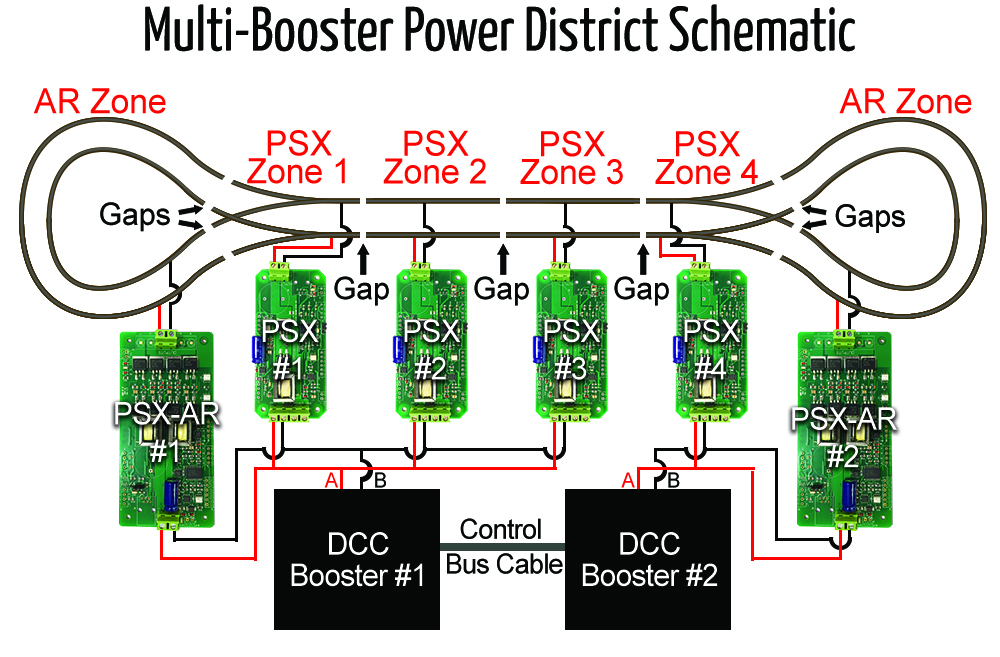DCC Specialties PSX and Multi-Boosters Diagram
Probably the best way to determine where to place power districts is to take a look at the expected current draw [primarily locomotive motors which use power] for each operating location on the layout.

For example, a busy yard might have several switchers, one or more trains on the arrival and departure tracks, another train or two passing the yard on the main, and maybe a peddler local working nearby industries. If some or all of these trains have more than one locomotive, you could have 10 to 15 current drawing units all competing for power in a fairly small area.
Assuming all the locomotives have efficient motors, this type of power requirement [amps] may be large enough to overload a DCC system powered from one 5 Amp booster. For example, if you have four PSX set to the default current, each PSX will trip at about 4 amperes. If each power district draws 3.5 amperes, that is a total of 14 amperes. None of the PSX will trip, but your 5 amp booster will certainly shut down. You can solve this by lowering the trip current on each of the four PSX, getting a booster with a higher current rating, or splitting the four districts on one booster to two districts on each of two boosters.
